
Photographing the Spice Island of Zanzibar
by Reinhard Thomas
December 9, 2016

Wooden Doors in Zanzibar
The island of Zanzibar is located just 50 km off the coast of East Africa and consists of several islands. Zanzibar City, the capital city is located on the main island of Unguja, which is commonly called Zanzibar. The city’s historic center, Stone Town is where the Omanis and Yemenis settled in the 17th century and is now a UNESCO World Heritage site.
Zanzibar has a unique culture and history. The Portuguese gained control over this ancient island in the 1400’s and kept it for over 200 years before in 1698 the sultans of Oman took over ruling the islands. Although no longer common, pirates used the islands as their base to attack merchant ships off the East African Coast.
Dark clouds on the beach, Canon 7D, 27-70 mm at 32 mm, ISO 200, 1/400 sec at F10.
Upon taking control, the Sultanate developed plantations and started trade with other Arab countries and with the Bantu natives on the African mainland. Zanzibar played an important role in both, the Arab slave trade and in the ivory trade. The tusks of elephants that were killed in East Africa were shipped to Zanzibar and from there sold world wide.

Downtown Market, Canon 7D, Sigma, 10-20 F3.5, ISO, 100, 20 mm 1/100 sec at F 5.6.
The islands became a British protectorate in 1890 and this rule lasted until December of 1963 when Zanzibar gained its independence. Just a few weeks later a bloody revolution started in which thousands of Arabs and Indians were killed and Zanzibar was turned into a republic, which was subsumed into Tanzania in 1964. Today the islands are a semi-autonomous region of Tanzania.

Fish market in Stone Town, Canon 7D, Sigma 10-20 mm F3.5, ISO 160, 17 mm, 1/30 sec at F3.5
The bustling markets of Stone Town, the narrow winding streets and buildings that once were home to Sultan Barghash’s harem as well as countless mosques give a glimpse into the islands exotic past. It is still a largely Muslim island, and it’s culture is an amazing mesh of it’s Arab ruling past and African location. Stone Town is well known for its many ornately carved and studded wooden entrance doors – almost every corner you turn you see one of these stunning masterpieces. The impressive Arab Fort, located right on the waterfront, once provided protection for the busy harbor and now stands like a guard over the old city.
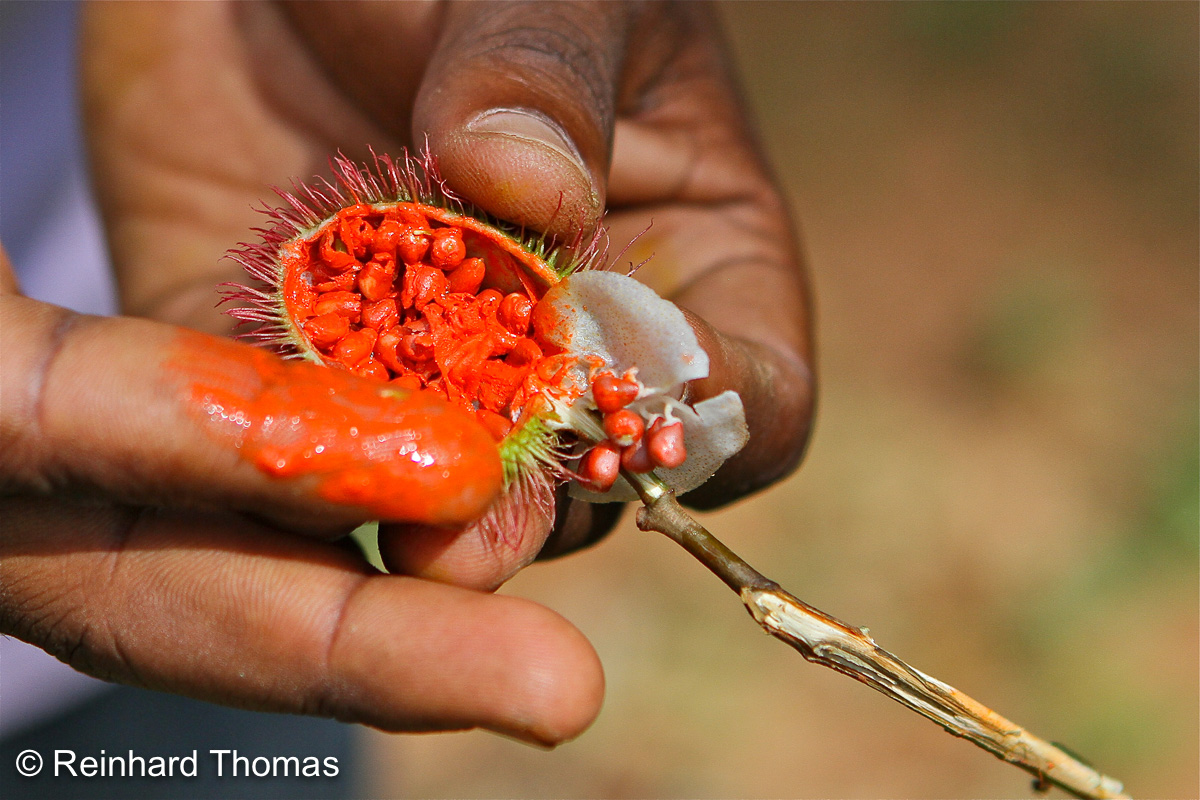
Fruit of the Achiote tree, better known as the lipstick tree. Canon 7D, EF24-70mm F2.8, ISO 250, 59 mm, 1/1600 sec at F 3.2.

How to apply colour from the Lipstick tree fruit. Canon 7D, EF24-70 F2.8, ISO250, 1/125 sec at F7.1.

Hybiscus is growing over all the island. Canon 7D, EF24-70, F2.8, ISO 200, 58 mm, 1/500 sec at F6.3.
Tourism is one of the larger industries on the main island because of it’s beautiful white sand beaches and the turquoise warm water. A large corral reef protects the beaches and you can walk out into the shallow ocean for several hundred meters. Several upscale modern beach resorts are located along the seafront. Neighbouring islands such as Mafia Island are also world-renowned scuba diving sites.

Low tide reveals interesting patterns on the beach. Canon 7D, EF24-70 F2.8, ISO 200, 32 mm, 1/125sec at F18.
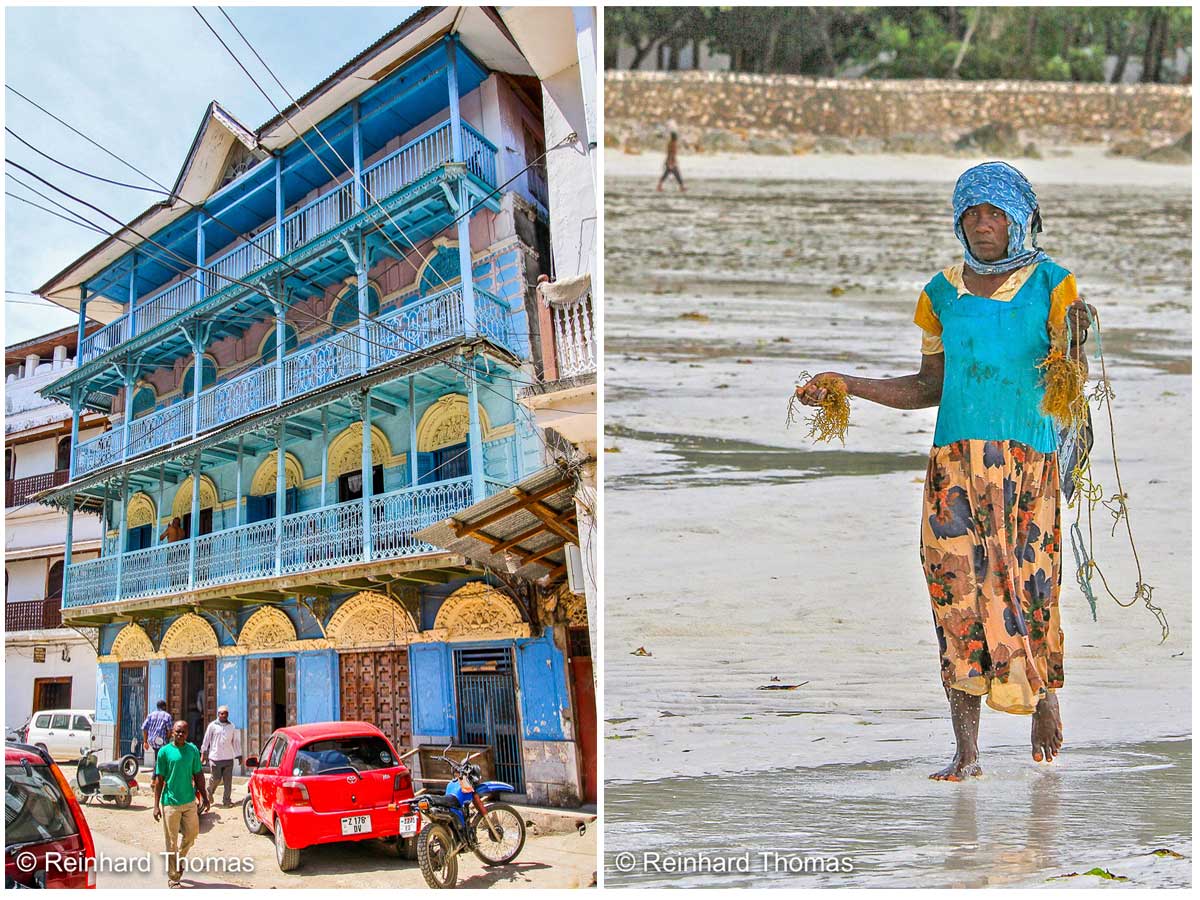
Left: Old ornamental house with beautiful balconies in Stone Town. Canon 7 D
, Sigma 10-20 F3.5, ISO 500, 18 mm, 1/320 sec at F10. Right: Seaweed Farmer along Beach. Canon 7D, Sigma F2.8, ISO 250, 104 mm, 1/500 sec at F7.1.
Seaweed is mainly used in toothpaste, medications, cosmetics, lotions and food. However today there are several factors, which negatively influence the seaweed production; mainly warmer seawater and bacterial growth on the plants.
Women carries seaweed from the ocean to the drying racks. Canon 7D, Sigma 70-200 F2.8, ISO 320, 157 mm, 1/1250 sec at F7.1.
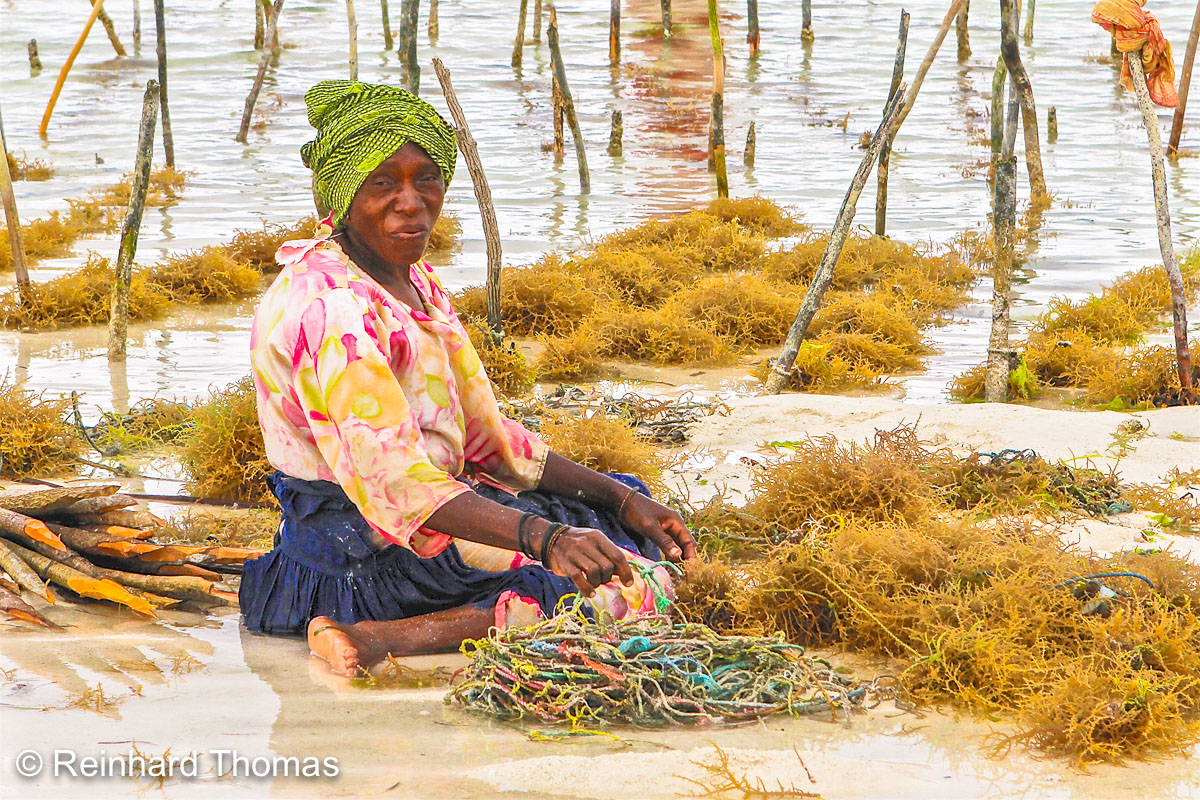
Woman planting Seaweed strings. Canon 7D, EF24-70 F2.8, 64 mm, 1/400 sec at F6.3

Women working on a seaweed farm. Canon 7D, Sigma 70200 F2.8, ISO 200, 64 mm, 1/400 sec at F6.3.
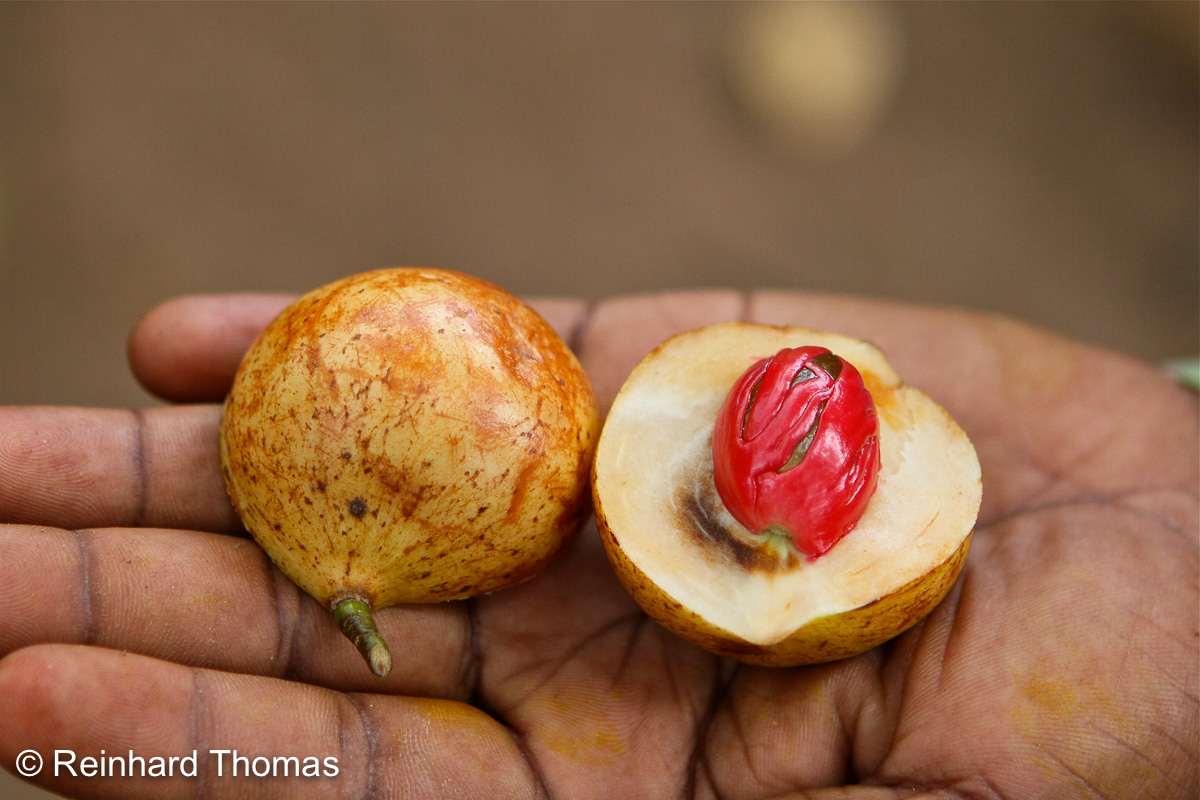
The red center pit of the fuit is Nutmeg. Canon 7D EF 24-70, F2.8, ISO 250, 58 mm, 1/320 sec at F2.8
Zanzibar’s main exports are spices such as cloves, nutmeg, saffron, cinnamon and pepper. This is why the island is also called the “Spice Island”. The island once produced ¾ of the world’s cloves. A tour of one of the numerous spice plantations is a must and includes opportunities to dazzle the senses with fresh spices and spice oils. During our tour we got detailed descriptions of the spices, and their uses in cooking and cosmetics. The sheer number of spices produced and their incredible value for many ailments fascinated us. Saffron is the most valuable spice from the island; it’s the world’s most expensive spice by weight.
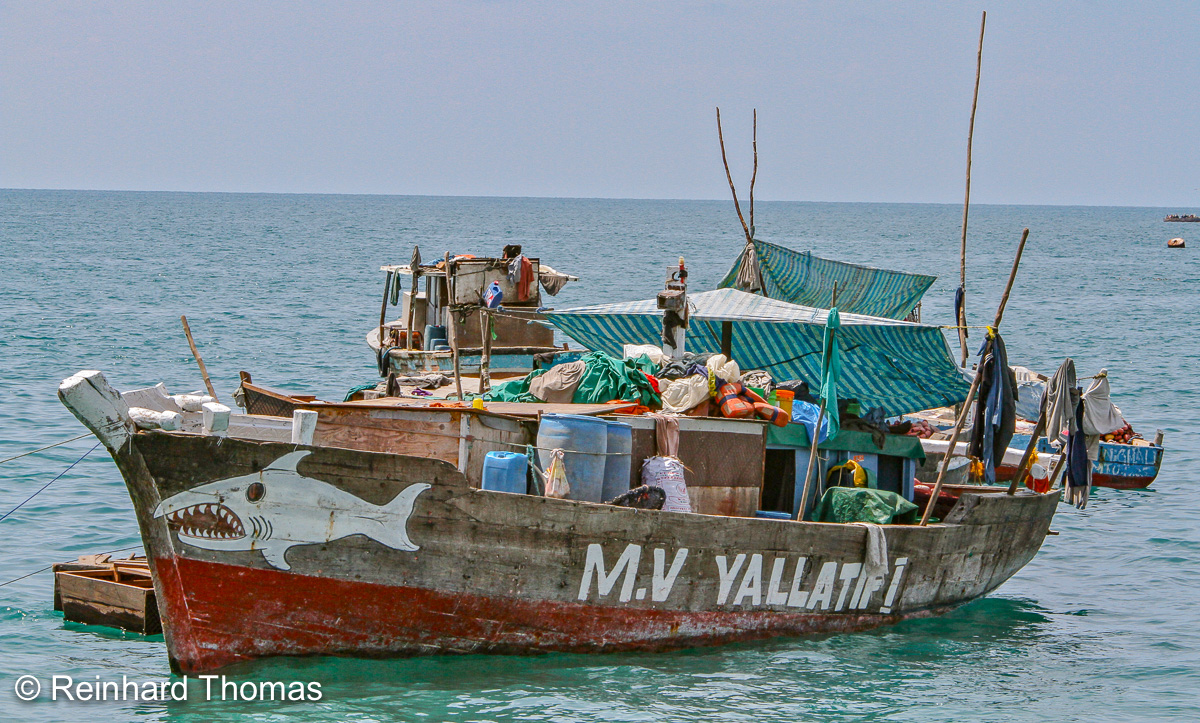
Small merchant houseboat in the harbour. Canon 7D, Sigma 70-200 F2.8, ISO 500, 112 mm, 1/200 sec at F18.

Typical outrigger fishing boat. Canon 7D, Canon EF 24-70 F2.8, 27 mm, 1/1000 sec at F9.
In the early 1990’s edible seaweed from the Philippines was introduced and became a very important export commodity. The seaweed farms consist of sticks, which are arranged in rows in the warm, shallow seawater. Strings are tied between the sticks and the seaweed seedlings are tied to the strings where they grow fast. 90% of the seaweed farmers are women. They search the shorelines for seaweed seedlings and they later harvest the crop. At harvest time, the weed is carried to shore and hung up to dry on crude wooden structures. Seaweed was seen as a gift from the ocean and it has transformed the lives of many women in Zanzibar because they are now able to support their families.

Typical narrow street in Stone Town lined with vendors, Canon 7D, Sigma 10-20 mm F3.5, ISO 500, 11mm, 1.250sec at F10.
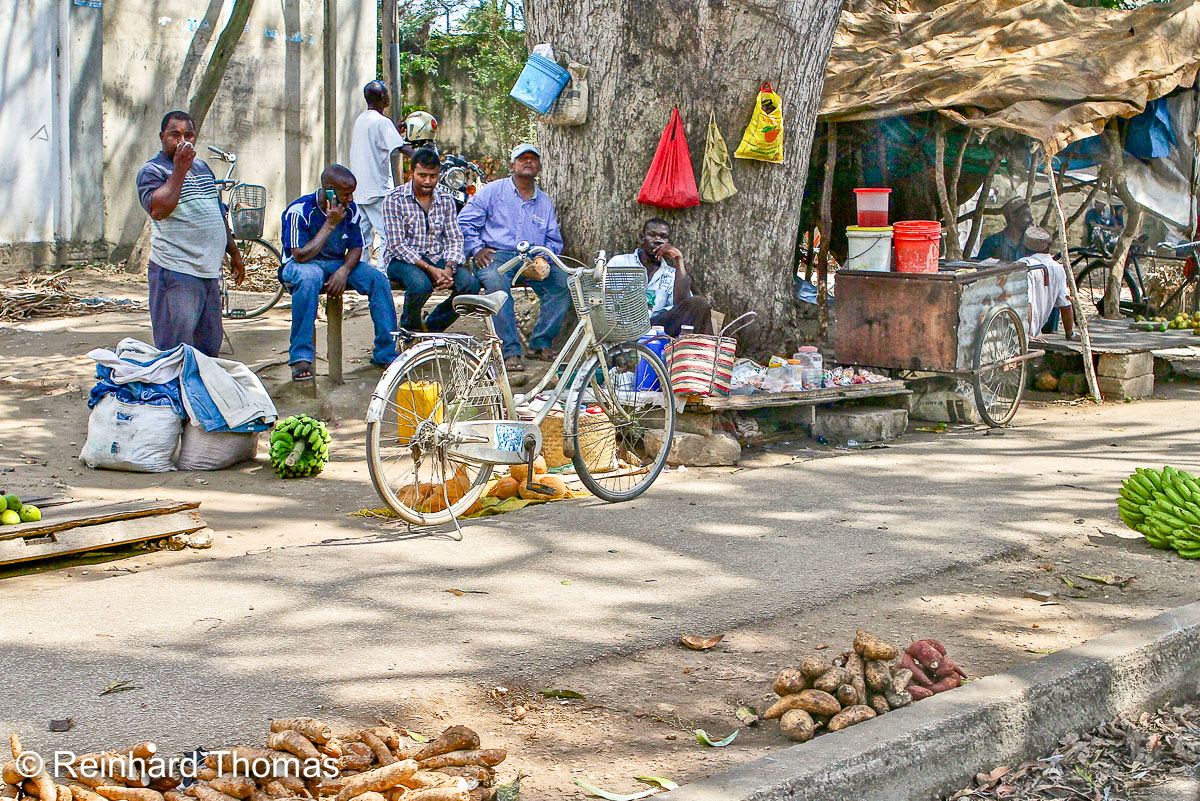
Typical street scene in rural area. Canon 7D, EF24-70, F2.8, ISO 400, 28mm, 1/1000 sec at F5.6
Being a small island, we did not see much wildlife in Zanzibar. Besides some birds, the red colobus monkey is endemic to Zanzibar and if you are really lucky you might spot one of the very rare servaline genets which just were re-discovered in the 21 Century (we were not so lucky).
For us, Zanzibar felt like a paradise in the Indian Ocean and it was well worth the trip.
Authors Biography & Contact Information

Reinhard Thomas is a photographer living in Calgary. He specializes in travel photography. Between travels he creates animal and landscape images and has a comprehensive collection of barn and grain elevator pictures.
Previous articles by Reinhard Thomas
Photographing Brazil’s Pantanal the Unknown Gem
Photographing in the Western Prairies
Photographing Madagascar
Photographing Cambodia, Kingdom of Wonder
Email: thomasrdu@telus.net
Web site: www.rthomasphotography.org
Phone: 403-239-3278
Click on the buttons below and share this site with your friends